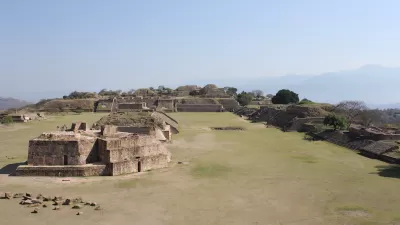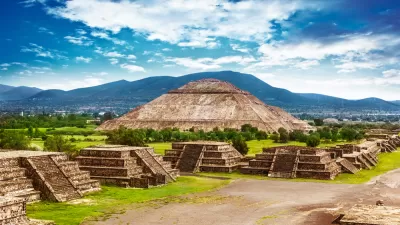The newly unearthed "golden city" sheds light on everyday life at the height of ancient Egypt's power.

A newly rediscovered "lost city" in Luxor is Egypt's most significant finding since Howard Carter unearthed King Tutankhamen's tomb in 1922, reports Sudarsan Raghavan for the Washington Post. The city is "believed to have been founded by King Amenhotep III, the ninth king of ancient Egypt’s 18th dynasty who ruled the country from 1391 to 1353 B.C.," and is possibly the largest administrative and industrial settlement of the time, an era when ancient Egypt was at the height of its wealth and power.
"The original goal of the mission was to find King Tutankhamen’s mortuary temple." Instead, the archaeologists found an entirely new city filled with buildings and artifacts that will help Egyptologists learn more about daily life in ancient Egypt. "The archaeological team dated the settlement through hieroglyphic inscriptions found on wine vessels, as well as rings, scarabs, pottery and mud bricks bearing the seals of King Amenhotep III’s cartouche."
The team has identified several specialized buildings and areas including a bakery and food storeroom, a craft workshop, and a fortified residential district. A cemetery is located north of the city, although the bodies of two cows and one human have been found within city buildings, leading to questions about social practices.
Luxor, known in ancient times as Thebes and the capital of then-Upper Egypt, is still a bustling city of over a million people today.
FULL STORY: A 3,000-year-old ‘lost golden city’ has been unearthed in Egypt

Study: Maui’s Plan to Convert Vacation Rentals to Long-Term Housing Could Cause Nearly $1 Billion Economic Loss
The plan would reduce visitor accommodation by 25,% resulting in 1,900 jobs lost.

North Texas Transit Leaders Tout Benefits of TOD for Growing Region
At a summit focused on transit-oriented development, policymakers discussed how North Texas’ expanded light rail system can serve as a tool for economic growth.

Using Old Oil and Gas Wells for Green Energy Storage
Penn State researchers have found that repurposing abandoned oil and gas wells for geothermal-assisted compressed-air energy storage can boost efficiency, reduce environmental risks, and support clean energy and job transitions.

Santa Barbara Could Build Housing on County Land
County supervisors moved forward a proposal to build workforce housing on two county-owned parcels.

San Mateo Formally Opposes Freeway Project
The city council will send a letter to Caltrans urging the agency to reconsider a plan to expand the 101 through the city of San Mateo.

A Bronx Community Fights to Have its Voice Heard
After organizing and giving input for decades, the community around the Kingsbridge Armory might actually see it redeveloped — and they want to continue to have a say in how it goes.
Urban Design for Planners 1: Software Tools
This six-course series explores essential urban design concepts using open source software and equips planners with the tools they need to participate fully in the urban design process.
Planning for Universal Design
Learn the tools for implementing Universal Design in planning regulations.
Ascent Environmental
Borough of Carlisle
Institute for Housing and Urban Development Studies (IHS)
City of Grandview
Harvard GSD Executive Education
Toledo-Lucas County Plan Commissions
Salt Lake City
NYU Wagner Graduate School of Public Service





























